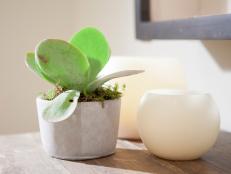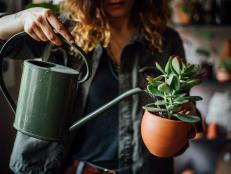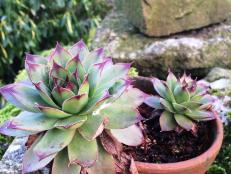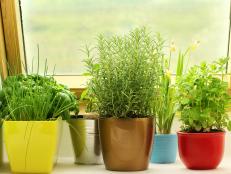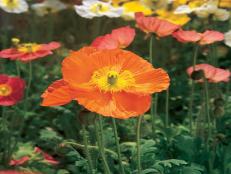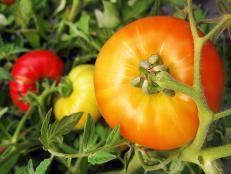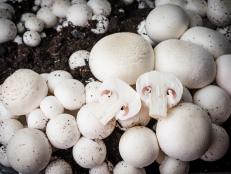Cultivating Cacti and Succulent Plants

Practically every discussion of cacti invariably includes the word "succulent," which literally means "juicy plant." It's a reference to the ability of these plants to retain vast stores of moisture, which enables them to survive harsh, dry climates. While all cacti are succulents, not all succulents are cacti. Master gardener Paul James explains the fine points:
There's no mistaking the fact that the familiar prickly pear is indeed a cactus, because it's loaded with spines. On the other hand, the ever-popular jade and aloe vera are succulents, but not cacti. The world of cacti includes a gamut of shapes and sizes. Many cacti are hardy and can be grown outdoors even where temperatures dip well below zero.
Cacti are members of a huge family that includes more than 1,300 species. Most cacti have virtually no leaves. Instead, their swollen stems have evolved to take the place of leaves. Without a lot of exposed leaf surface, cacti don't lose moisture as rapidly as other plants. Spines on various cacti are the most versatile and effective design features in the entire plant world. They serve many functions, the most obvious of which is physical protection. The spines also absorb and reflect sunlight so that the internal temperature of the plant remains fairly constant both day and night. They also function as drip tips — collecting moisture from mist, dew, fog and light rain and channeling it down to the root system.
Although the jade plant is a succulent, it's not a cactus. The roots of cacti typically lie just below the surface of the soil. That adaptation allows them to make quick use of moisture, which they store in special tissues and use when water is scarce.
Because cacti have adapted well to adverse conditions, they make great houseplants. Where other plants might fail in the hot, dry atmosphere of the typical living room — or barely survive — cacti often thrive. In fact, most people lose their plants from pampering too much; however, it would be a mistake to assume that cacti don't need any attention.
First of all, these plants require a lot of light, and a southern or southeastern exposure is ideal for most species. A sun porch is ideal for growing cacti — and so is a greenhouse — but if all you have is a sunny windowsill, that'll work fine. Don't put the plants too close to the glass, however, because the light in the summer can be too intense and drafts in the winter can create problems, too.
Cacti need pots that are porous — unglazed terra-cotta is ideal — so the potting soil can dry quickly. Glazed pots are attractive but they don't dry out as fast, and that can lead to root rot in cacti.
The soil mix you choose is also important. A good mix contains somewhat equal parts of coarse sand and all-purpose potting mix. Many cactus gardeners have their own formulas, however, including various proportions of potting mix, coarse sand, perlite, peat moss and even leaf mold. The advantage of growing cacti in an improved mix is that the need for fertilizer is greatly reduced. Most cacti will grow fine with nothing more than a once-a-month feeding with a dilute liquid fertilizer or an occasional dusting with a half teaspoon of bone meal or limestone.
Like other houseplants, cacti hate being overwatered. The worst thing you can do is water them on a regular schedule. Instead, water them only when needed — when the soil is bone-dry. How long it will take for soil to dry out between watering depends on the conditions of your home; you might need to water once a week or once every three or four weeks. Let the soil tell you when it needs water. During winter, some cactus growers even stop watering altogether from October until March. When you do water, make sure you soak the soil completely, but don't allow the water to stand in the pot saucer or you might end up with a root rot problem.
Every three to five years, it's a good idea to repot your cactus. It's a task that may seem a bit daunting at first, but there are ways to get the job done without experiencing any pain. One way is take a section of newspaper, and make several accordion folds in it and wrap it around the cactus and gently lift it out of one pot into another. Paul prefers kitchen tongs. He wraps paper towels around each end of the tongs, secures the paper towels with rubber bands, and then uses the tongs to lift the cactus out of the pot.
Many cacti are easy to propagate — especially from cuttings using a technique known as decapitation. Paul cut a stem from a mature prickly pear, let the cut tissue air-dry for about a week, then put the cutting directly in a potting mix. You can also graft one species of cacti to another, and the effect can be striking.







